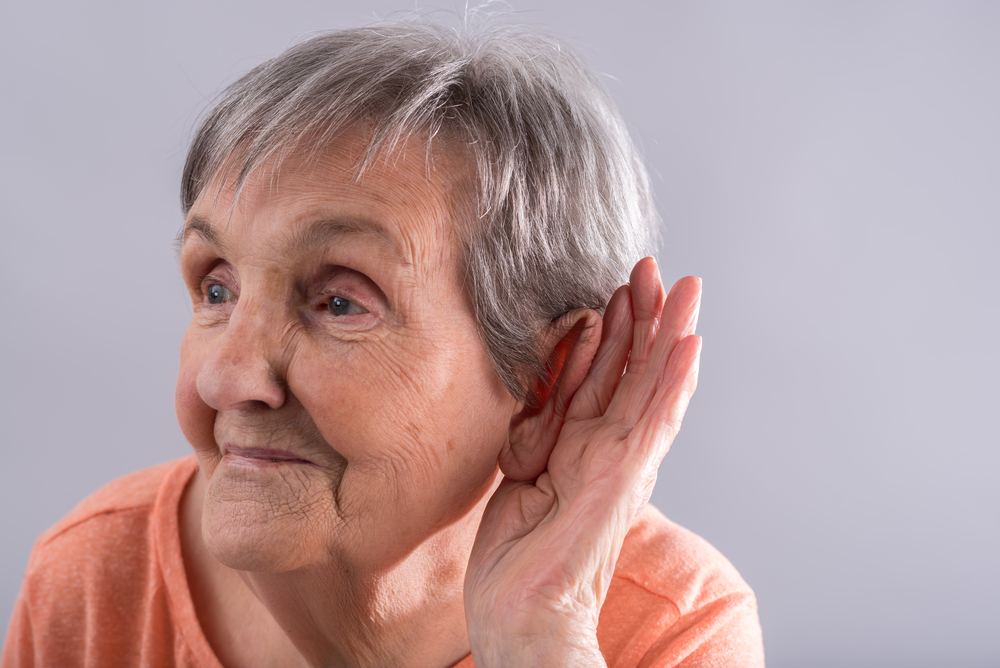As you age, subtle changes in your hearing often go unnoticed. However, you might notice the TV volume inching higher and crowded conversations becoming difficult to follow. These minor changes can often be the early whispers of age-related hearing loss.
But, why does this happen? In this article, our hearing specialists will be diving into the science behind this phenomenon. We’ll provide professional insight into why your hearing changes, and most importantly, what to do when it does.

Understanding the Link Between Age and Hearing
It’s common knowledge that your hearing declines with age, but why? As your age, the delicate structures in your ears undergo wear and tear, just like the rest of your body. This damage causes age-related hearing loss, medically known as presbycusis.
Presbycusis can manifest in six distinct types, each affecting your inner ear in a unique way. So, let’s take a look at the different types and how they affect your hearing ability.
- Sensory presbycusis: Your cochlea relies on its hair cells to convert sound vibrations into electrical signals for the brain, allowing you to hear. When these hair cells degrade, it ‘dims’ these electrical signals, hindering your ability to perceive high frequencies. Because sensory presbycusis affects primarily high-frequency sounds, this type of hearing loss typically doesn’t affect communication.
- Neural presbycusis: This type of presbycusis occurs when more than 50% of your cochlear neurons are lost. Unfortunately, these neurons will naturally degrade based on your environment, genetics, and a plethora of other factors. The degeneration in your auditory pathways begins early in life, but typically isn’t an issue until later years.
- Mechanical presbycusis: Over time, the basilar membrane thickens, which can impede its ability to process sound waves. This type of hearing loss typically affects higher frequencies, but gradually becomes more pronounced as you age.
- Stria presbycusis: The stria vascularis provides the blood supply in the inner ear, but over time, this mechanism also deteriorates. Because this atrophy impacts the bloodflow in your cochlea, the entire ear is affected. This means that stria presbycusis affects all frequencies of sound, including speech.
- Mixed presbycusis: When more than one of these types are present, it’s considered mixed presbycusis. For example, you might experience both a loss of cochlear hair cells and changes in the stria vascularis, leading to a more complex pattern of hearing loss.
- Indeterminate presbycusis: Surprisingly, almost a quarter of presbycusis cases are indeterminate. This means the cause cannot be clearly determined, but the patient still experiences age-related hearing loss.
This deterioration can be a result of natural changes in your hearing structure, loud noises, or more commonly, a combination of both. While these factors are difficult to control, simple lifestyle changes, such as monitoring your diet, quitting smoking and staying healthy can slow down the effects of presbycusis. But, what do you do when you start to notice the inevitable effects of time on your hearing ability?
Navigating Age-Related Hearing Loss Solutions
The realization of diminishing hearing can be daunting. However, you’re far from alone. Millions of people suffer from age-related hearing loss, and fortunately, there are three easy steps to diagnosing and treating this condition:
- Identifying the Severity of your Hearing Loss
- Adapting your Lifestyle for Improved Communication
- Preventing Further Hearing Deterioration
1. Identifying the Severity of your Hearing Loss
Before you can begin your journey to better communication, you’ll have to identify the severity of your hearing loss. To do this, you’ll have to get a hearing evaluation, where the specialist will assess your hearing loss.
During the evaluation, the audiologist will not only identify the severity, but also the type of hearing loss. Each type affects your hearing differently, and therefore, has different treatment options. By identifying both the severity and type of your hearing loss, you can select a treatment that will most effectively restore your communication ability.
2. Adapting your Lifestyle for Improved Communication
Once you’ve identified how severe your hearing loss is, you can begin taking steps toward improved communication. The most common solution is to use a hearing aid, which amplifies sound waves to rejuvenate your hearing.
If you don’t want to use hearing aids, there’s a few other lifestyle changes that can help you restore your communication ability. One of the most effective solutions is to adopt new communication strategies, like lip reading or sign language. Changing your environment to avoid background noise can also help facilitate clearer conversations. By employing these strategies, you can often mitigate the complications of age-related hearing loss without the need for a hearing aid.
3. Preventing Further Hearing Deterioration
Identifying your severity and adapting your lifestyle will help you manage your hearing damage, but how can you avoid further damage? First and foremost, protecting your ears from excessive noise will slow the decay of your cochlear hair cells. To do this, avoid loud environments or wear ear protection when absolutely necessary.
Regular checkups are also crucial for monitoring your hearing loss, even when employing the strategies above. By avoiding excessive noise and getting regular checkups, you can effectively safeguard your ears and maintain the best possible hearing ability.
Getting Started with Hearing Loss Treatment
If your hearing loss becomes problematic, you can get in touch with a specialist to find the most effective solution. This might include hearing aids, cochlear implants, or even just new communication strategies.
Regardless of which option you select, it’s important to speak with a hearing specialist as soon as possible to ensure the most effective treatment. Our experts have years of experience in helping maintain and restore your hearing ability. Give us a call at 702-857-8188 or visit our contact page to get started!




Leave a Reply